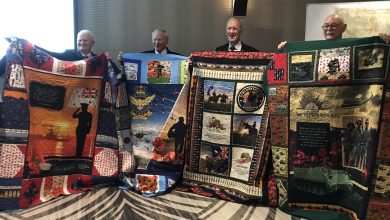The Development & Deployment of the Forgotten Flotilla
Although not specifically mentioned anywhere, it is likely much of Churchill’s motivation for the development of the Tank Landing Craft stemmed from the Dunkirk evacuation of late May and early June 1940. In that operation, upwards of 300,000 troops were taken safely from the French coast. However, as there were no suitable vessels to uplift materiel directly from the beaches, and the docks were too badly damaged, equipment for almost ten divisions was abandoned and left behind. This included ammunition, light and heavy guns, trucks, motorcycles, tanks as well as other supplies. Churchill was not about to let this happen again.
Before the middle of July, Churchill had his ideas for the landing craft drawn up by a naval architect, Roland Baker. With finance quickly approved, the first order for twenty Tank Landing Craft Mk1 was submitted to a selection of shipyards to begin construction immediately. Meanwhile, the skippers and the crew to man the prototypes were secretly chosen and underwent commando training in Scotland in preparation.
The flotilla went down to Egypt, leaving England late December 1940, on cargo ships accompanying troop transports in convoy WS 5A. The designation WS apparently stood for ‘Winston’s Specials’. Strangely, the manifests for the convoy detail everything and everybody except the new landing craft and their crews!
“How was it travelling in the convoy?” Michael asked of John Digby Sutton during one of their many meetings. “Didn’t want to get off,” laughed John. “Could have cruised the bloody world for a few years,” he added. No wonder. John, along with the other skippers and their crews, travelled to the Middle East, not with the rank and file troops but aboard a luxury Dutch Cruise liner, Costa Rica. Indeed, it seemed Churchill had some special agenda for this flotilla.
The convoy was unable to take the faster route through Gibraltar due to U-boat activity in the area. Instead, it went around the Horn of Africa and up to the Suez Canal. The landing craft were unloaded. It took just over a month to reassemble and fit out the first five. These five craft were then immediately sent on a mission to supply the besieged town of Tobruk.
John’s war started just thirty minutes out of Alexandria harbour on this his first mission. A wave of dive-bombers swept in. They flayed the water around his craft with machinegun fire and let loose sticks of high explosive. The flat-bottomed vessel lifted out of the water crashing back down with so much power that everything of glass onboard smashed. This included the ship’s two compasses.
“No compasses?” Michael queried. “How did you navigate?” Without missing a beat John replied ‘Well, I had a schoolboy knowledge of astronomy and knew where the north star was, so I tied a broom handle to the railing around the command centre. And I kept a crewman seated up there to make sure it stayed in line.” Keep in mind John the skipper was only twentyone at this stage. To the readers here I would ask, “Would a twenty-one year old today even know what a broom is?”
More on John and his craft will follow soon.










